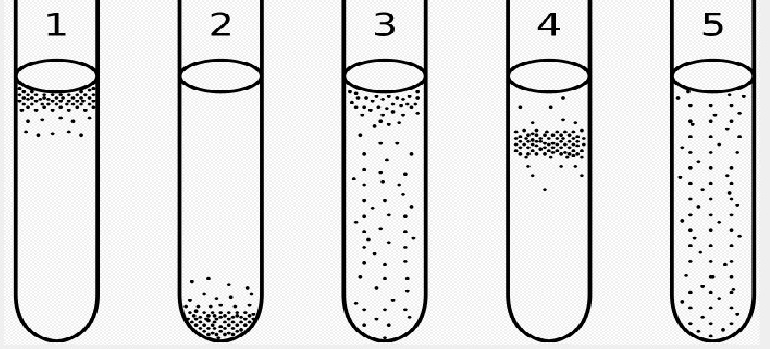Term for the biochemical metabolism of organic substances in the absence of oxygen. The fermentation of a wine usually takes place largely under anaerobic conditions. In 1861, the scientist Louis Pasteur (1822-1895) discovered in the course of his research that yeasts consume sugar much more quickly in an anaerobic environment. In this respect, one speaks of the Crabtree effect. In contrast, the presence of oxygen is called aerobic.

Graphic: Aerobic and anaerobic bacteria can be identified in liquid nutrient solution: (1) Obligate aerobic bacteria collect at the top where they get enough oxygen. (2) Obligate anaerobic bacteria collect at the lower end where there is no oxygen. (3) Facultative anaerobic bacteria are mainly found at the top because oxygen respiration is most effective; but they also grow in the deeper parts of the test tube. (4) Microaerophiles gather at the top, but not at the very top, because oxygen is only optimal for them in low concentrations. (5) Aerotolerant bacteria are not affected by oxygen and therefore distribute themselves evenly in the test tube.
Voices of our members

I have great respect for the scope and quality of the wein.plus encyclopaedia. It is a unique place to go for crisp, sound information on terms from the world of wine.
Dr. Edgar Müller
Dozent, Önologe und Weinbauberater, Bad Kreuznach